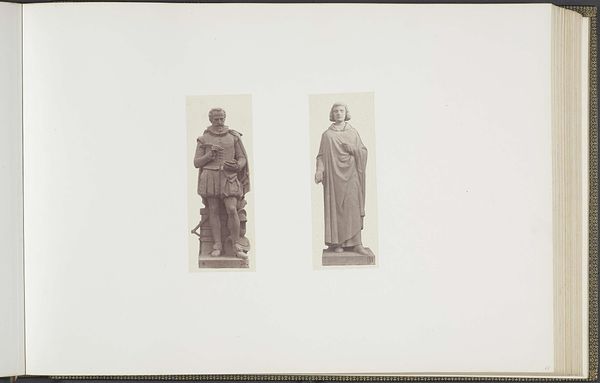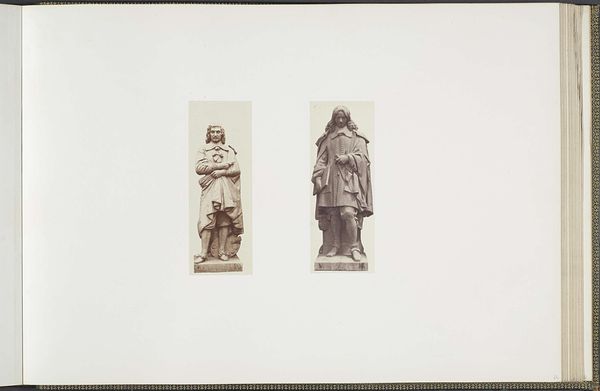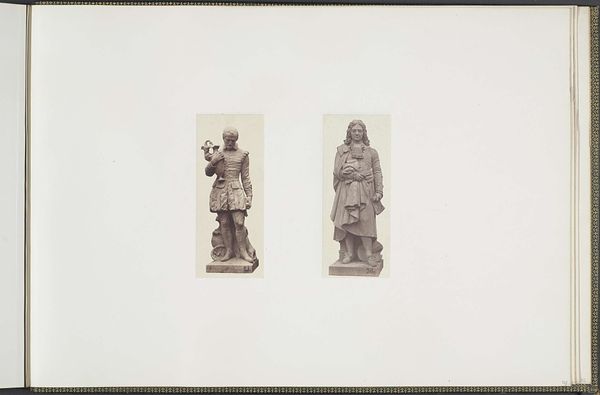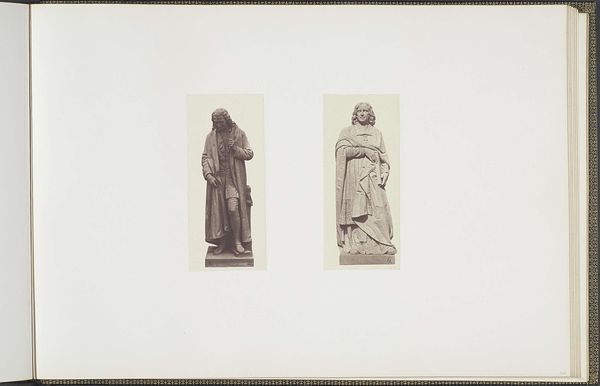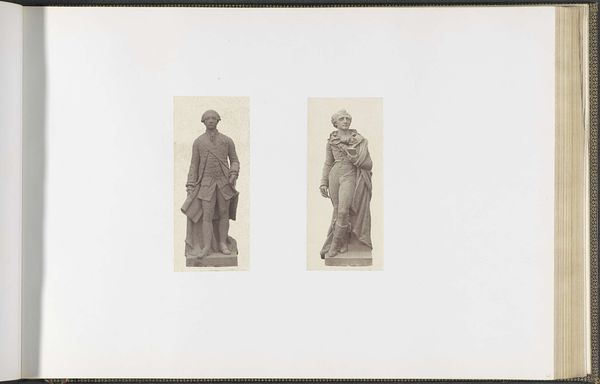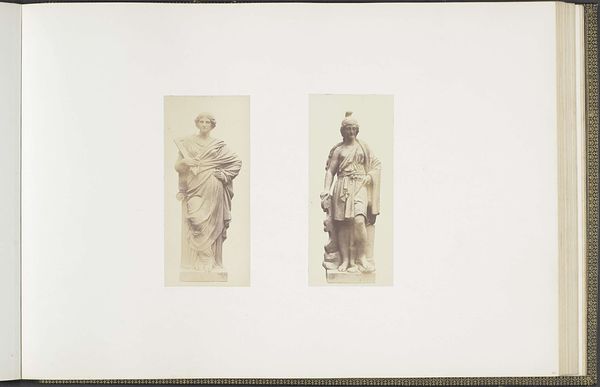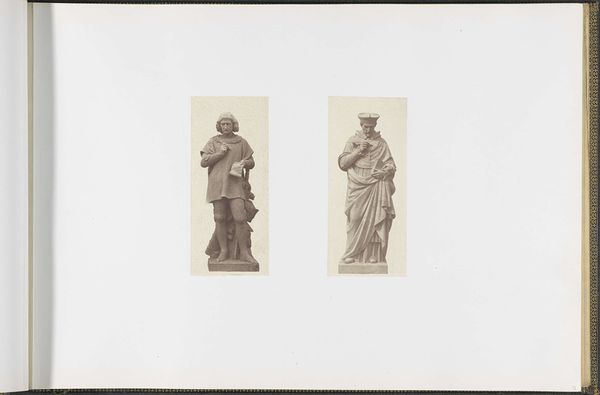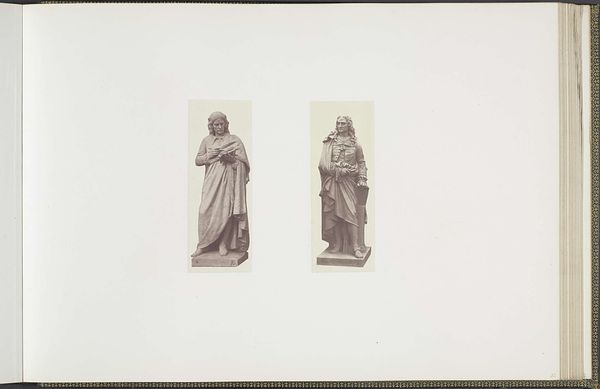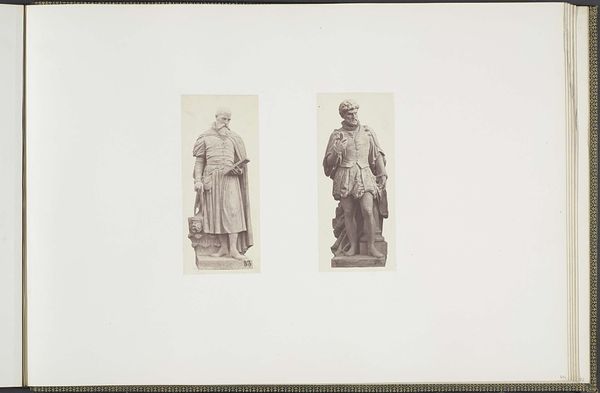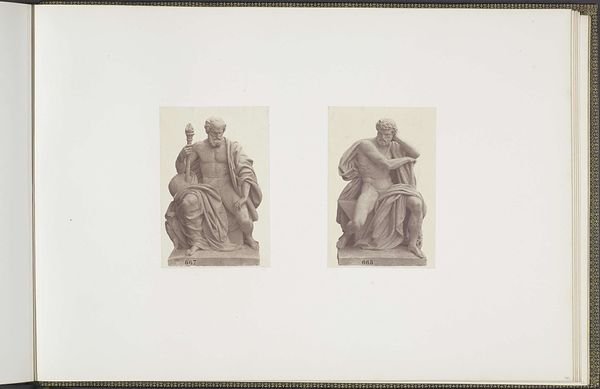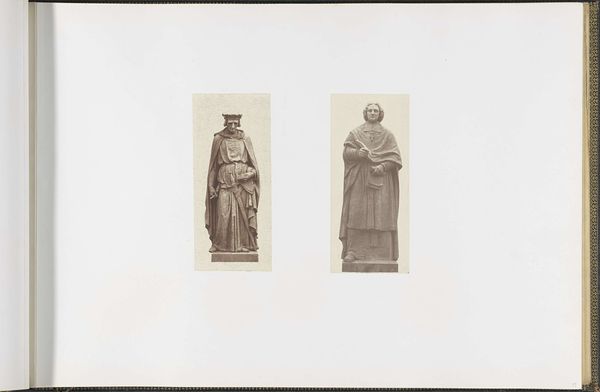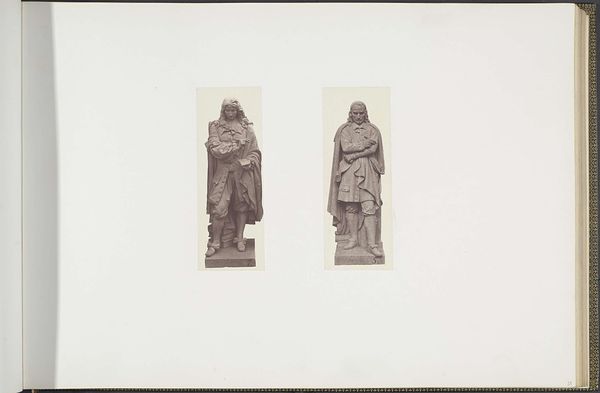
Gipsmodellen voor beeldhouwwerken op het Palais du Louvre: links "Descartes" door Gabriel Joseph Garraud en rechts "Paré" door Michel-Pascal c. 1855 - 1857
0:00
0:00
print, bronze, photography, sculpture
#
portrait
# print
#
bronze
#
photography
#
sculpture
#
history-painting
#
academic-art
#
realism
Dimensions: height 382 mm, width 560 mm
Copyright: Rijks Museum: Open Domain
Editor: So, this is Édouard Baldus's photograph from around 1855-1857, "Gipsmodellen voor beeldhouwwerken op het Palais du Louvre," currently at the Rijksmuseum. It depicts plaster casts of sculptures, Descartes and Paré, both figures in French history. The photograph itself feels… clinical, almost like a document. What's your take? Curator: Indeed. Baldus, in documenting these sculptures, inadvertently offers a glimpse into the politics of representation. Why these figures? Descartes, representing reason, and Paré, a significant figure in medicine – both icons the French state sought to promote during a period of nation-building. Notice how they’re presented almost as trophies within the Louvre’s collection, stripped of color, reduced to form in this photographic reproduction. Does this 'clinical' approach speak to a broader societal impulse to control and define cultural identity? Editor: That’s a really interesting point. It's easy to just see them as statues, but framing them as symbols carefully chosen and presented makes you think about what they represent in a broader sense. Curator: Exactly! Consider how photography itself was becoming a tool for cataloging and classifying. Think about its potential for both preserving cultural heritage and reinforcing power structures through controlled visual narratives. It's like a carefully curated historical script, and figures like Descartes and Paré were chosen for very specific roles. Who gets to write this script, and whose stories are left out? Editor: I guess I hadn't thought about how even photographing sculptures could be a political act. Curator: It almost always is! Art, even in its apparent neutrality, often serves an agenda. It encourages us to be more conscious about how art is presented and received, and what voices are amplified, or silenced in the process. Editor: Well, this has definitely given me a new perspective on photography's role beyond just documentation. Thanks! Curator: My pleasure! It's through these critical interrogations that we enrich our understanding and engagement with the art world.
Comments
No comments
Be the first to comment and join the conversation on the ultimate creative platform.
